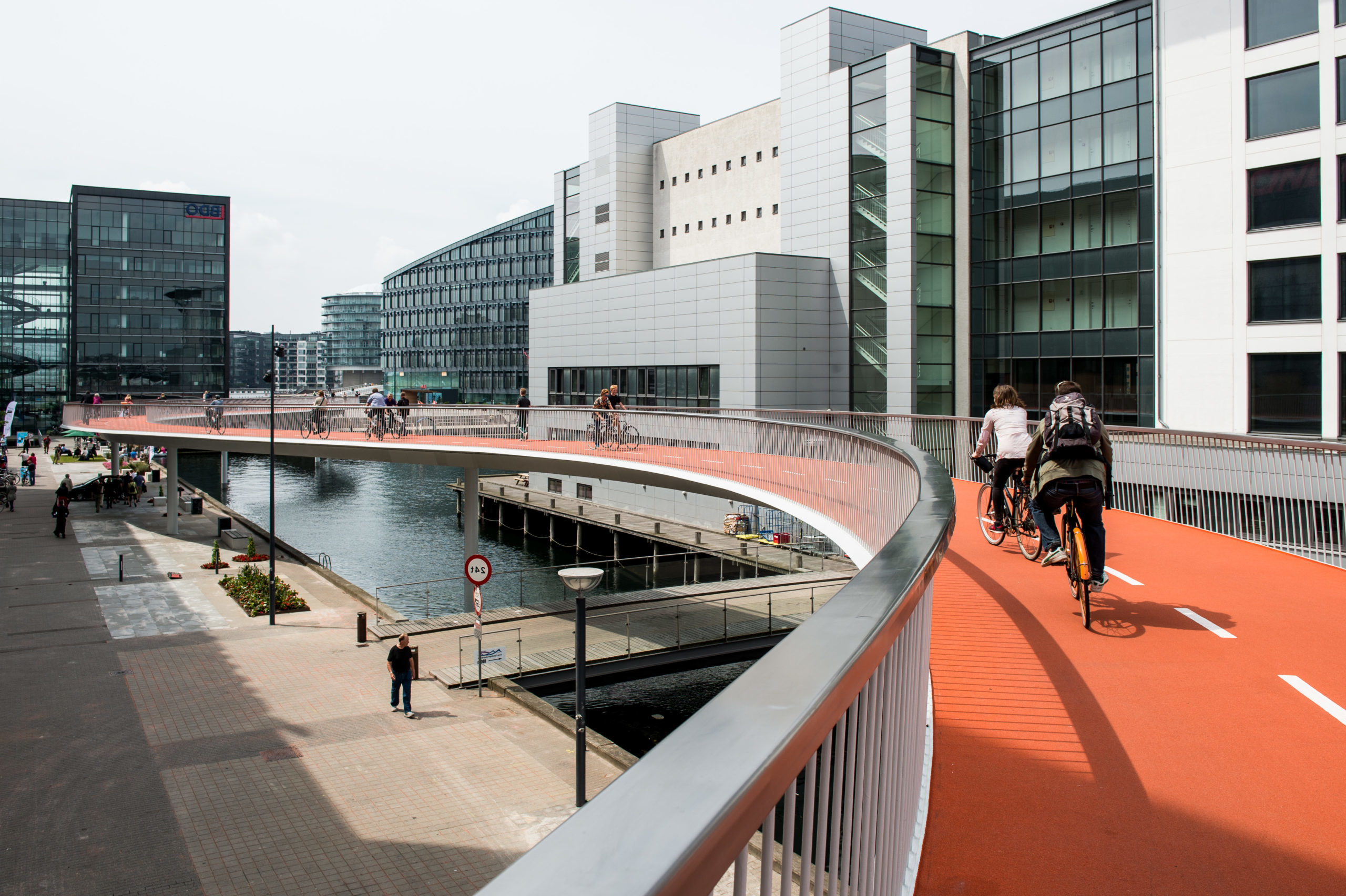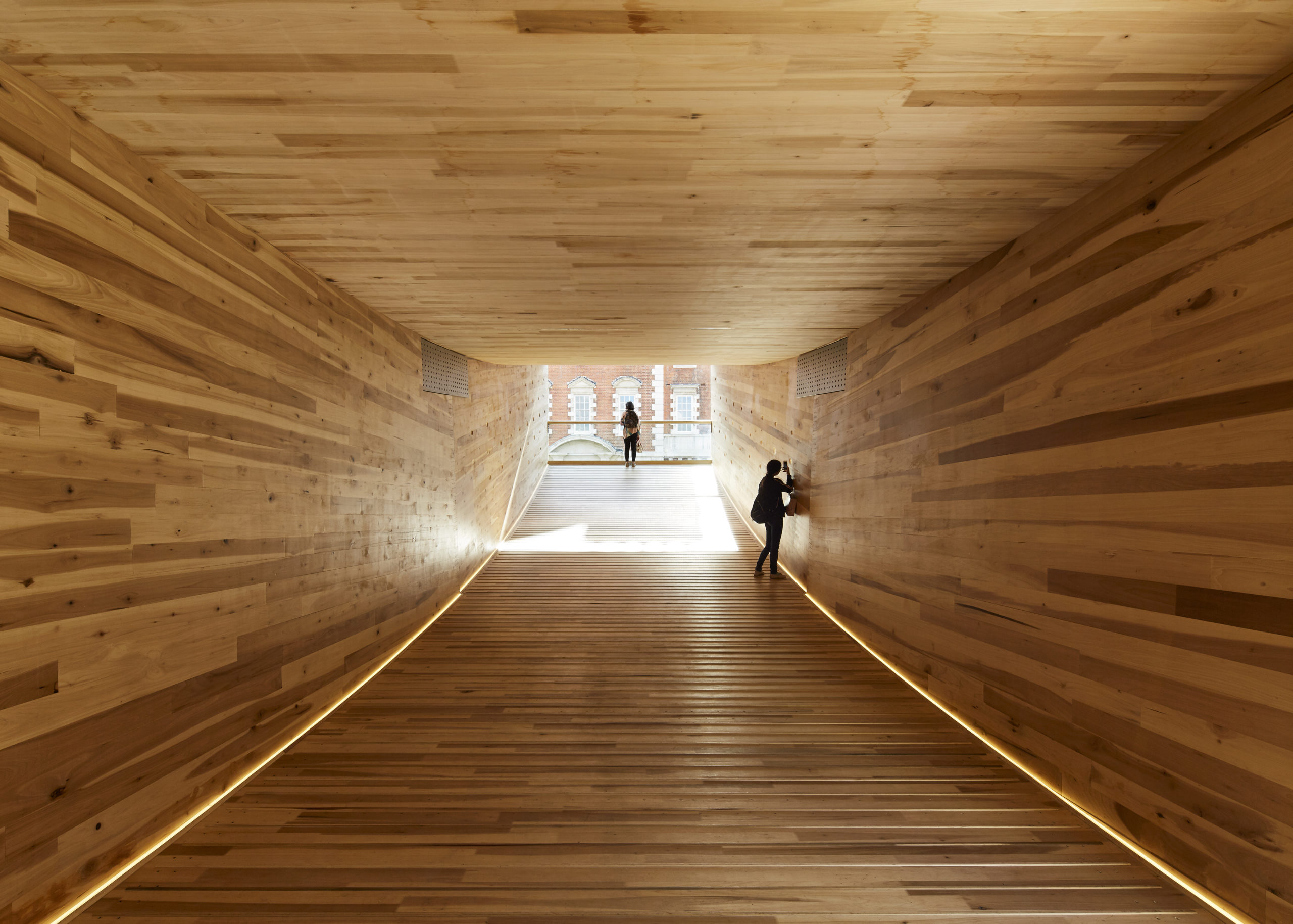A perennial challenge for architects is creating presentation-worthy renderings fast enough that they can also be used as part of the design process. Rendering plug-ins for design software have long been a viable way to approach this challenge, but the game has just changed with the release of V-Ray Next for Revit, the newest generation of the popular V-Ray rendering software.
Far more than an incremental update, this entirely new release is a leap in V-Ray’s evolution, rendering scenes substantially faster and integrating with Revit much deeper than the previous build. V-Ray Next for Revit is such an advancement that its creator, Chaos Group, is hosting a webinar on January 14th to introduce all its new functions. Sign-up is open now, but in the meantime we’ve picked out some of the best new features and expanded on them here.
Faster Rendering
Decreasing render times is an obvious goal, but V-Ray Next for Revit allows a high degree of control over how that’s accomplished. By offering an option between GPU rendering and CPU rendering, as well as a hybrid setting between the two, users can choose a rendering speed to suit a specific project or workflow. The GPU setting’s ability to quickly render atmospheric effects like fog and aerial perspective is an added bonus on tight deadlines.
Scene Intelligence
V-Ray Next for Revit can automatically analyze a scene to optimize its own render settings, sparing new users an overwhelming learning curve and allowing them to immediately realize the software’s full power. Analogous to using a real camera, Scene Intelligence simplifies settings into intuitive options such as exposure, white balance and depth of field, removing unnatural light and balancing colors in the process.
Randomized Entourage
Simplifying the challenge of placing natural-looking scenery objects in a rendering, V-Ray Next for Revit can automatically populate images with appropriate entourage at random scales and rotations. While designers may be familiar with this task as one that drastically reduces design software performance, V-Ray Next places entourage in Revit without polluting the BIM database, thus having no impact on Revit’s functioning.
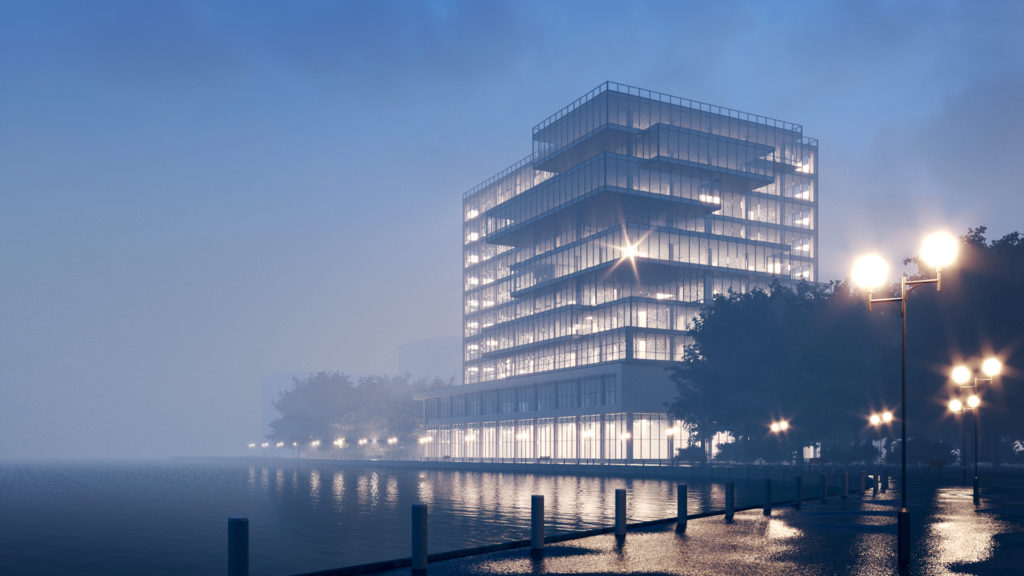
Environmental Effects and Entourage in V-Ray Next
Saved Settings
Many rendering plug-ins only retain custom settings for a single user, forcing different users of the same project to manually copy render settings themselves. V-Ray Next for Revit has eliminated this problem by storing render settings directly in Revit projects. Settings stick to the file regardless of who opens it or if the file is copied or renamed, speeding up collaboration across teams working on the same Revit model.
Redesigned Asset Editor
Perhaps the most noticeable new feature in V-Ray Next for Revit is a streamlined Asset Editor. Overhauled to display all V-Ray materials in one place with an easily understandable interface and folder structure, users can now edit, save and manage their materials more intuitively than in V-Ray’s previous version. The new Asset Editor allows simple applications and powerful tweaks that can realize extremely realistic surface properties in a final rendering.
Appearance Manager
A new addition, the Appearance Manager in V-Ray Next for Revit utilizes the presence of Revit assets to speed up rendering. This tool lets users retain basic assets while working in Revit, then automatically switches them to more realistic V-Ray assets when the scene is rendered. Formerly called the Asset Browser, the new Appearance Manager adds a healthy dose of realism to renderings without affecting the Revit model.
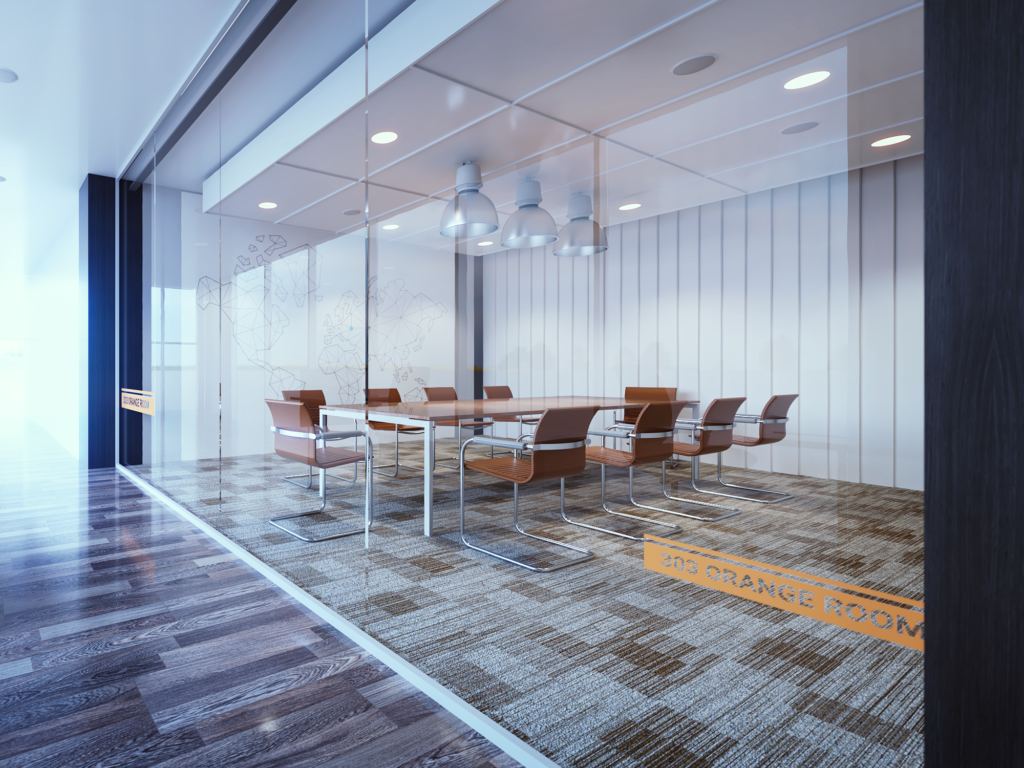
Interior Rendering Made with Adaptive Dome Light
Adaptive Dome Lighting
Part of Scene Intelligence, V-Ray Next for Revit’s Adaptive Dome Light is a quick way to automatically light complicated interior scenes, often an Achilles heel for plug-in rendering programs. Automatically optimizing image-based lighting, the Adaptive Dome Light intelligently selects which aspects of an environment to sample and which to ignore, cutting typical render times for interior scenes in half.
Camera Lens Effects
This release of V-Ray welcomes a redesigned set of camera lens effects, from bloom and glare to dust and scratches. Useful for adding life-giving touches of imperfection to an image, V-Ray Next for Revit also allows users to set a focus point on a particular object in their scene, which will automatically appear in focus when the scene renders.
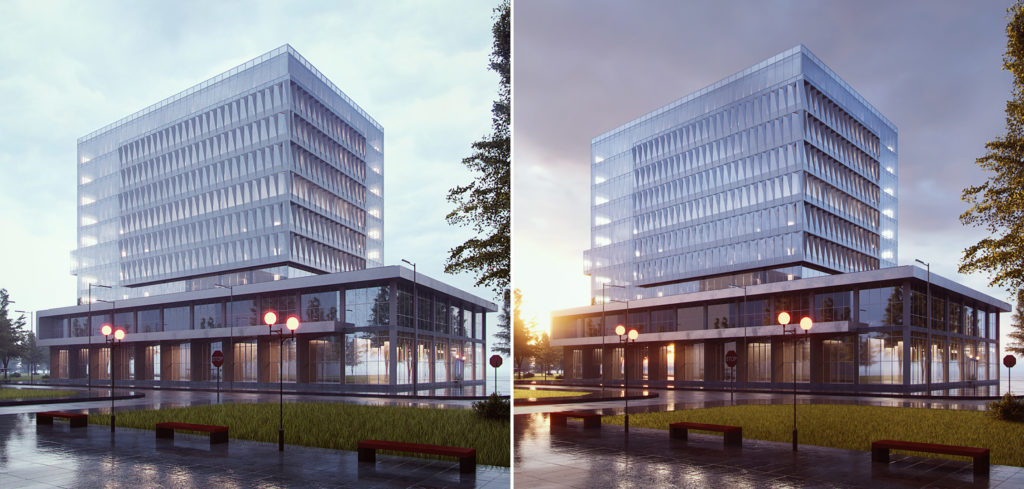
Environmental Lighting and Background Images are Easily Coordinated in V-Ray Next for Revit
Consolidated Environment Lighting
As one of the many user experience improvements featured in this release, all environment lighting settings have been consolidated into a single dialog box, which also contains background image options. This makes matching ambient light to a particular background image much simpler than in earlier versions of V-Ray, and also allows them to be rotated in unison, easily simulating a particular orientation for surroundings in exterior renderings.
Artificial Intelligence Denoising
Quickly removing basic static in a rendered image, V-Ray Next for Revit has an integrated NVIDIA AI denoiser that works instantaneously. Good for prepping images that will be manipulated in post-production, the AI denoiser can also be used on individual output channels, offering significant control over the compositing process.
Curious how V-Ray Next for Revit can work for you? Give the software a try for yourself, and don’t forget to sign up for the introductory webinar on January 14th.
All images via Chaos Group

